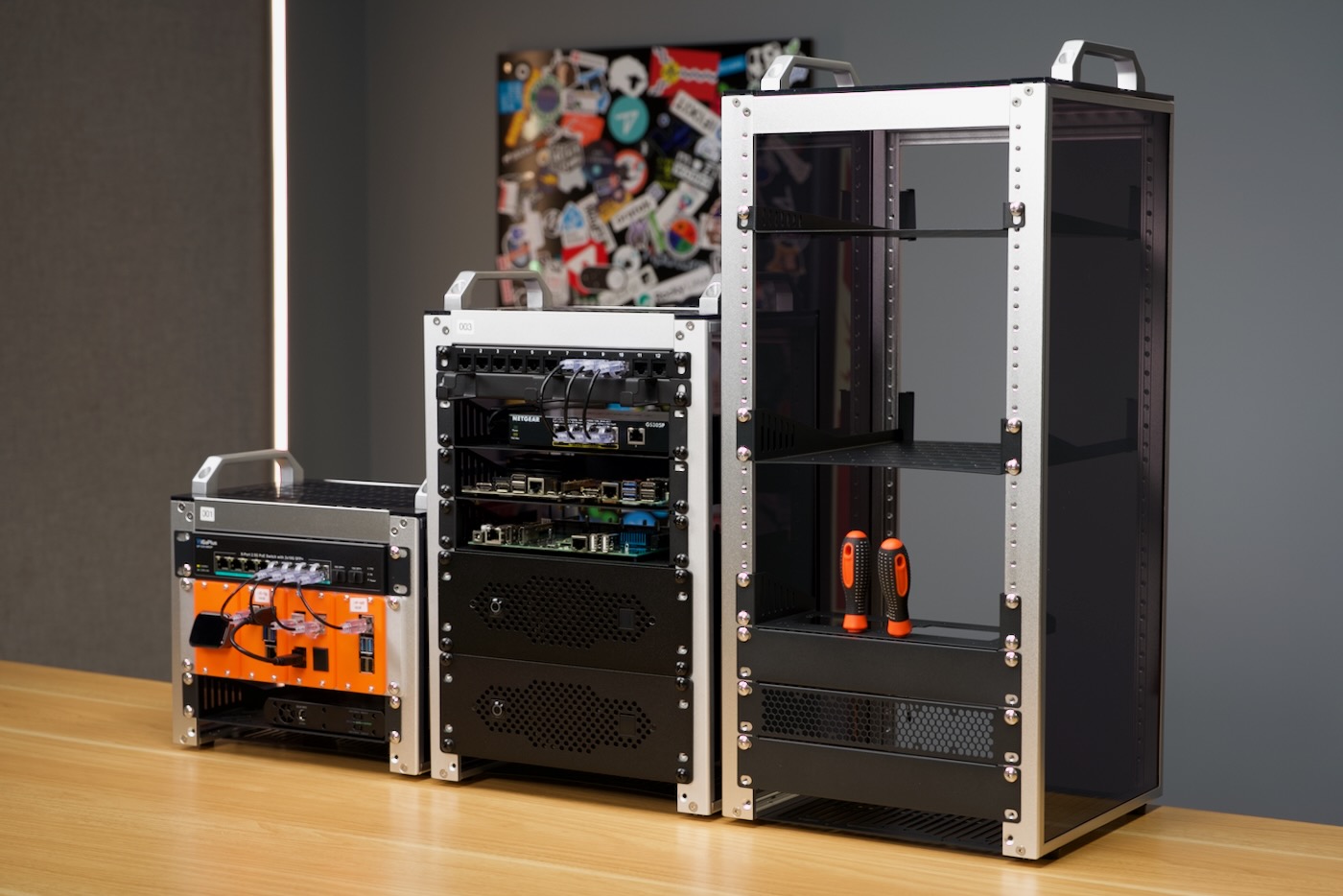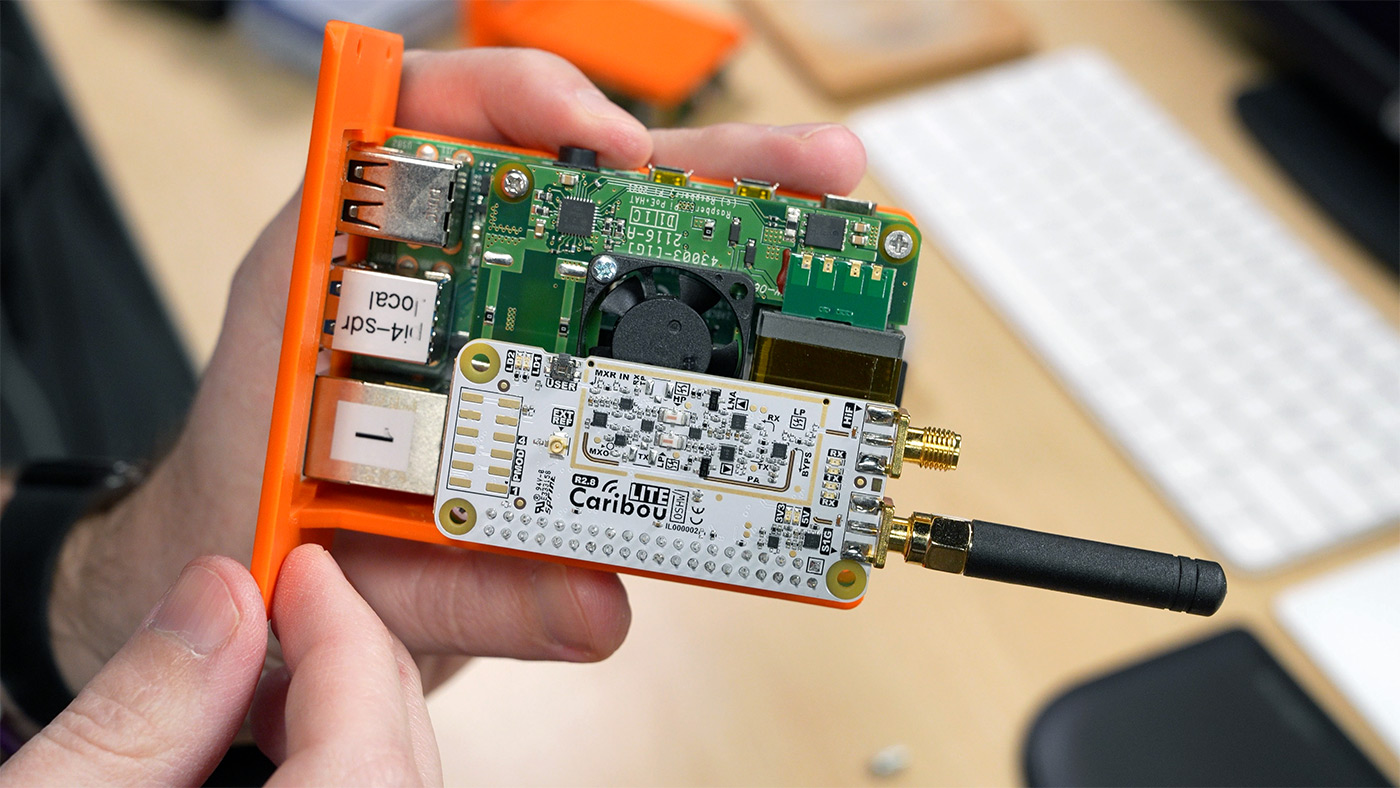Project MINI RACK - what have we started??
Today I set up a new DeskPi RackMate 12U model, the T2, and compared it to the other existing models (T0 / 4U and T1 / 8U)... and I have to ask: at what point are these racks not 'mini' anymore?

Today I set up a new DeskPi RackMate 12U model, the T2, and compared it to the other existing models (T0 / 4U and T1 / 8U)... and I have to ask: at what point are these racks not 'mini' anymore?


A couple years ago, after I heard about the CaribouLite on CrowdSupply, I pre-ordered one.
I've dabbled in SDR with an RTL-SDR v3 for a few years, even using one with nrsc5 to listen to baseball games OTA because of silly MLB blackout restrictions.
But low-cost SDRs like the RTL-SDR v3 are receive-only, and have a limited frequency range, and lower quality RF filtering, so it can be frustrating if you're trying to work with lower-power RF... or trying to transmit at all!
Some broadcast engineering tasks are a bit too daunting for me to consider. Climbing the massive towers that power radio and TV stations is one of them!
Recently, local engineer Aaron Cox had the perfect set of conditions for a drone flight to capture some of that risk, as the weather and timing of an antenna inspection lined up perfectly with his schedule.
I'll summarize a bit of what we talked about in today's Geerling Engineering video, but if you want to watch that directly, it's embedded below:
Meshtastic—a simple off-grid mesh network used to transfer short messages—is a neat bit of tech, but until recently, most development has focused on little nodes with or without tiny OLED displays, and a separate phone app or web UI to actually interact with the mesh.
The major use case I have for Meshtastic is backup comms—when cell networks and physical infrastructure may be unavailable. In those conditions, I don't want to run my full computer, or even a full smartphone, just to communicate long range via text.
Enter the T-Deck:

A few months ago, our AM radio hot dog experiment went mildly viral. That was a result of me asking my Dad 'what would happen if you ground a hot dog to one of your AM radio towers?' He didn't know, so one night on the way to my son's volleyball practice, we tested it. And it was awesome.
There's a video and some pictures in my hot dog radio blog post from back in March.
After seeing the Meshtastic booth at Open Sauce, my Dad and I thought it would be fun to learn more about the low power radio tech by getting our own radios and experimenting.

Then, we were contacted by Simon from Muzi Works, and he offered to send a few units of R1 and H1, his company's pre-built Meshtastic nodes.
What's a node, and what is Meshtastic? Excellent question.
Simply put—and copied shamelessly from the official website:
An open source, off-grid, decentralized, mesh network built to run on affordable, low-power devices
Meshtastic nodes are often tiny gumstick-size PCBs with a LoRa radio module, a couple buttons, a tiny OLED display, and a USB port.
Today on Geerling Engineering, my Dad and I toured the tower site for WSDZ-AM, located in Belleville, IL. It's a 20kW AM radio station broadcasting with an array of eight individual towers:

How does one get a single coherent signal out of an eight-tower array? Enter the phasor:


That's phasor with an o, not phaser with an e, so Trekkies need not fret about a misspelling.
...except it was a beef frank. Make your wurst jokes in the comments.

What you see above is the remains of a hot dog after it has been applied to an AM radio tower operating in its daytime pattern, at around 6 kW.
A couple months ago, soon after we posted our If I touch this tower, I die video, a few commenters mentioned you likely wouldn't die after touching a high-power AM tower—rather, you'd have serious RF burns.
I was trying to figure out a way to somewhat safely test the scenario: what would happen if someone walked up and touched the tower, while standing on the ground?
If reading's not your thing, check out the short video we posted on Geerling Engineering:
Nearing it's centennial, KMOX-AM (1120 kHz) is a 50,000-watt clear-channel AM radio station with studios located in downtown St. Louis, MO, USA.
But their broadcast tower is located about 10 miles northeast, in Pontoon Beach, IL. My Dad was the director of engineering overseeing the tower and studios for about 20 years, and though he's no longer there, he and I got permission from Audacy and the St. Louis engineers (thanks!) to tour the site, and learn a bit about how they broadcast their AM signal—which reaches all the way into Canada and Mexico at night!

In this blog post, I'll write a bit about KMOX's tower system (AM towers are a lot different than FM, like the FM Supertower we toured last year), the transmitter, and the some of the history found at that tower site.
...that was the question I asked my Dad, a radio engineer for many decades, who worked at the biggest AM station in St. Louis, KMOX. The station is approaching its centennial in 2025, as are—some YouTube commenters argue—its primary audience!
I recorded that video during my convalescence at my parents' house (I am feeling much better now, thank you!), and my Dad discussed a few reasons why AM radio—at least in the US—is not dead. But it is suffering.
In the video, I pointed out the current dichotomy: